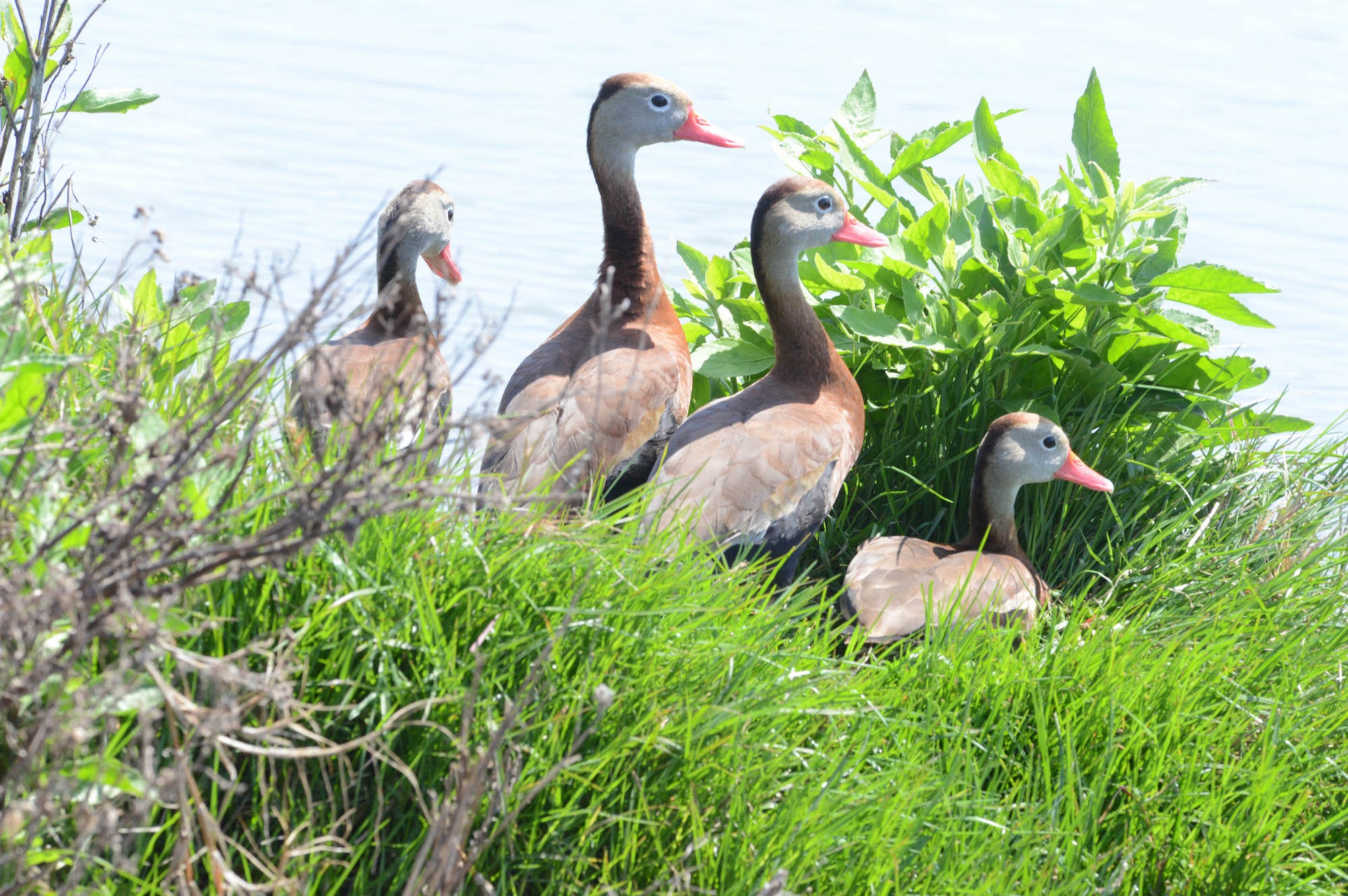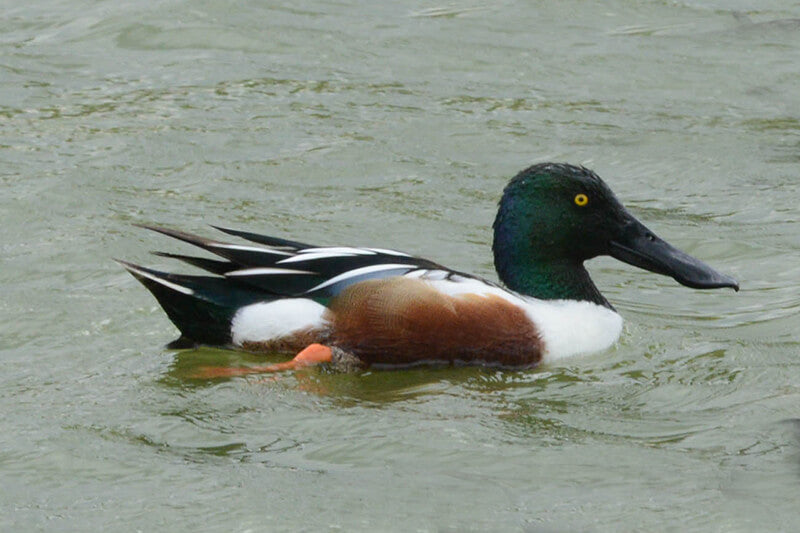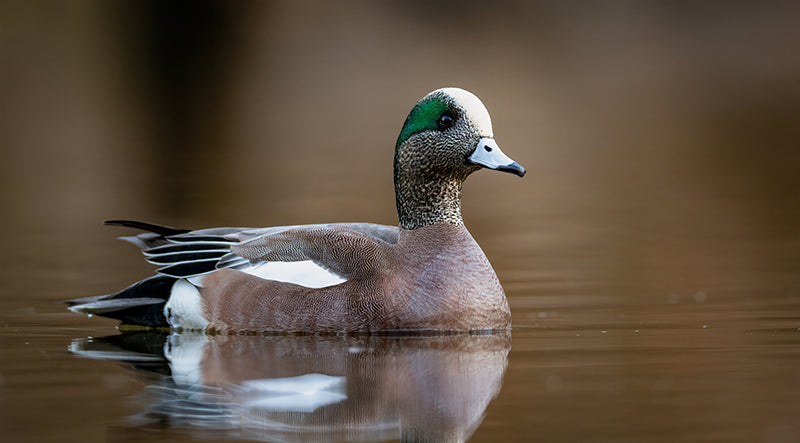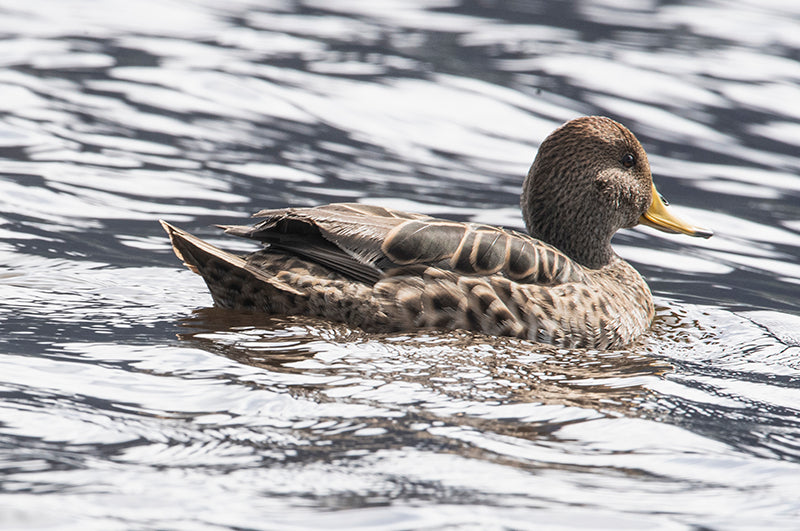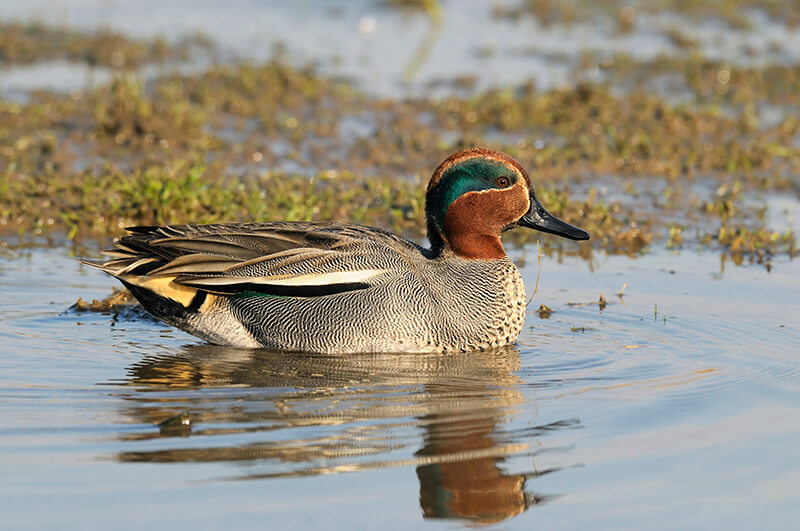Ducks and Geese
Order: ANSERIFORMES - Family: ANATIDAE
165 Species currently existing - 23 in region + 4 vagrants
Appearance: Ducks and Geese are characterized by their compact bodies, webbed feet, and specialized bills designed for feeding on aquatic plants, invertebrates, and small fish. They have waterproof feathers that help them float and regulate their body temperature. Males exhibit more vibrant plumage and distinctive features, such as colorful head markings or elongated feathers.
Habitat: Ducks and Geese can be found in a range of wetland habitats, including lakes, rivers, ponds, marshes, and coastal areas. Some species also inhabit high-altitude lakes and wetlands in the Andean region. These waterfowl require suitable nesting sites, ample food sources, and undisturbed areas to rest and breed.
Migration and Breeding: Many duck species are migratory, taking advantage of the diverse climate and habitat offerings. During the breeding season, ducks and geese form pairs and construct nests near water bodies. They lay eggs and raise their young, teaching them essential skills for survival. Migration occurs in search of favorable feeding and breeding grounds.
Ecological Role: Ducks and Geese play a vital role in the ecosystem. They disperse seeds through their feces, which aids in the regeneration of plant species. Their feeding habits also help control populations of aquatic invertebrates, contributing to ecosystem balance. Ducks and geese serve as indicators of wetland health, as their presence reflects the quality of these habitats.
Threats and Conservation: Ducks and Geese face several threats including habitat loss, pollution of wetlands, hunting, and climate change. Conserving their habitats, implementing hunting regulations, and promoting educational initiatives are crucial for their long-term survival.
White-faced Whistling-duck
Dendrocygna viduata
Spanish name: Iguasa Careta
Size: 18 in | 46 cm
Habitat: Marshes and rice fields, north of Colombia and most of the Llanos
Height: <2700 m
Photo: © Luis A. Materon
Black-bellied Whistling-duck
Dendrocygna autumnalis
Spanish name: Pisingo
Size: 22 in | 56 cm
Habitat: In marshes and ricefields, in lowlands of the Andes and north of Colombia
Height: <2700 m
Photo: © Luis A. Materon
Fulvous Whistling-duck
Dendrocigna bicolor
Spanish name: Iguasa Maria
Size: 19 in | 48 cm
Habitat: Marshes and rice fields, lagoons north of the country, transient in east of the country
Height: <2700 m
Photo: © Luis A. Materon
Ruddy Duck
Oxyura jamaicensis
Spanish name: Pato Rufo
Size: 16 in | 41 cm
Habitat: Open bodies of fresh and somewhat salty or briny water. A diving duck.
Height:
Photo: © Bob Gwaltney Photography iStock/Getty Images Plus
Andean Duck
Oxyura ferruginea
Spanish name: Pato Andino
Size: 16 in | 41 cm
Habitat: Marshy and deep lakes and ponds
Height: 2000-4000 m
Photo: © Luis A. Materon
Black Scoter
Melanitta americana
Spanish name: Negrón Americano
Size: 19 in | 48 cm
Habitat: Coastal waters. A diving duck.
Height: <
Photo: © Doug Hitchcox eBird S33148516 Macaulay Library ML 43175941
Orinoco Goose
Oressochen jubatus
Spanish name: Pato Carretero
Size: 27 in | 69 cm
Habitat: The plains grasslands, freshwater marshes, river banks,
Height: <500 m
Photo: © Gabriel De Jesus Utria Ortega iStock/Getty Images Plus
Muscovy Duck
Cairina moschata
Spanish name: Pato Real
Size: 30 in | 76 cm
Habitat: Marshes, forested swamps, lakes, wooded rivers and swamps
Height: <1000
Photo: © Luis A. Materon
American Comb Duck
Sarkidiornis sylvicola
Spanish name: Pato Crestudo Americano
Size: 30 in | 76 cm
Habitat: Fresh water lakes, swamps, larger bodies of open water in llanos Colombia
Height: <500 m
Photo: © Rafael Cerqueira iStock/Getty Images Plus
Southern Pochard
Netta erythrophthalma
Spanish name: Pato Negro
Size: 20 in | 51 cm
Habitat: Marshes and shallow freshwaters
Height: <500 m rarely 2600 m
Photo: © hstiver iStock Getty Images Plus
Ring-necked Duck
Aythia collaris
Spaniish name: Pato Collarejo
Size: 17 in | 43 cm
Habitat: Fresh water marshes, ponds, wooded lakes and brackish marshes
Height: <2600 m
Photo: © Jeff Huth iStock/Getty Images Plus
Lesser Scaup
Aythya affinis
Spanish name: Pato Canadiense
Size: 16.5 in | 42 cm
Habitat: Wetlands, fresh water, open bays and brackish water
Height: <3000 m
Photo: © Luis A. Materon
Northern Shoveler
Spatula clipeata
Spanish name: Pato Cucharo
Size: 19 in | 48 cm
Habitat: Shallow bodies of fresh water as well as salt water
Height: <2600 m
Photo: © Luis A. Materon
Cinnamon Teal
Spatula cyanoptera
Spanish name: Pato Colorado
Size: 16 in | 41 cm
Habitat: Marshes and ponds
Height: <3500 m
Photo: © Eduardo Lago V.
Blue-winged Teal
Spatula discors
Spanish name: Barraquete Aliazul
Size: 16 in | 41 cm
Habitat: Shallow saltwater and fresh water, lowland marshes, coastal lagoons
Height: <3600 m
Photo: © Eduardo Lago V.
American Wigeon
Mareca americana
Spanish name: Pato Americano
Size: 20 in | 51 cm
Habitat: Shallow freshwaters, ponds, lakes and marshes
Height: <2600 m
Photo: © johnrandallalves iStock/Getty Images Plus
Mallard
Anas platyrhynchos
Spanish name: Pato Real
Size: 23 in | 58 cm
Habitat: Lakes, small ponds, rivers fresh and salt water wetlands
Height: <2600 m
Photo: © Luis A. Materon
White-cheeked Pintail
Anas bahamensis
Spanish name: Pato Cariblanco
Size: 17 in | 43 cm
Habitat: Brackish lakes, Marshes, estuaries, mangroves and bays
Height: <2600 m
Photo: © Rudolf Ernst iStock/Getty Images Plus
Yellow-billed Pintail
Anas georgica
Spanish name: Pato piquidorado
Size: 24 in | 61 cm
Habitat: Marshes, inland lakes and rivers, shallow water bodies
Height: <3300 m
Photo: © Luis A. Materon
Common Teal
Anas crecca
Spanish name: Pato Aliverde
Size: 14 in | 36 cm
Habitat: Sheltered freshwater wetlands
Height: <2600 m
Photo: © William Krumpelman iStock/Getty Images Plus
Andean Teal
Anas andium
Spanish name: Cerceta Barcina
Size: 16 in | 41 cm
Habitat: Andean lakes and ponds, freshwater wetlands
Height: <2600 - 4300 m
Photo: © Eduardo Lago V.


